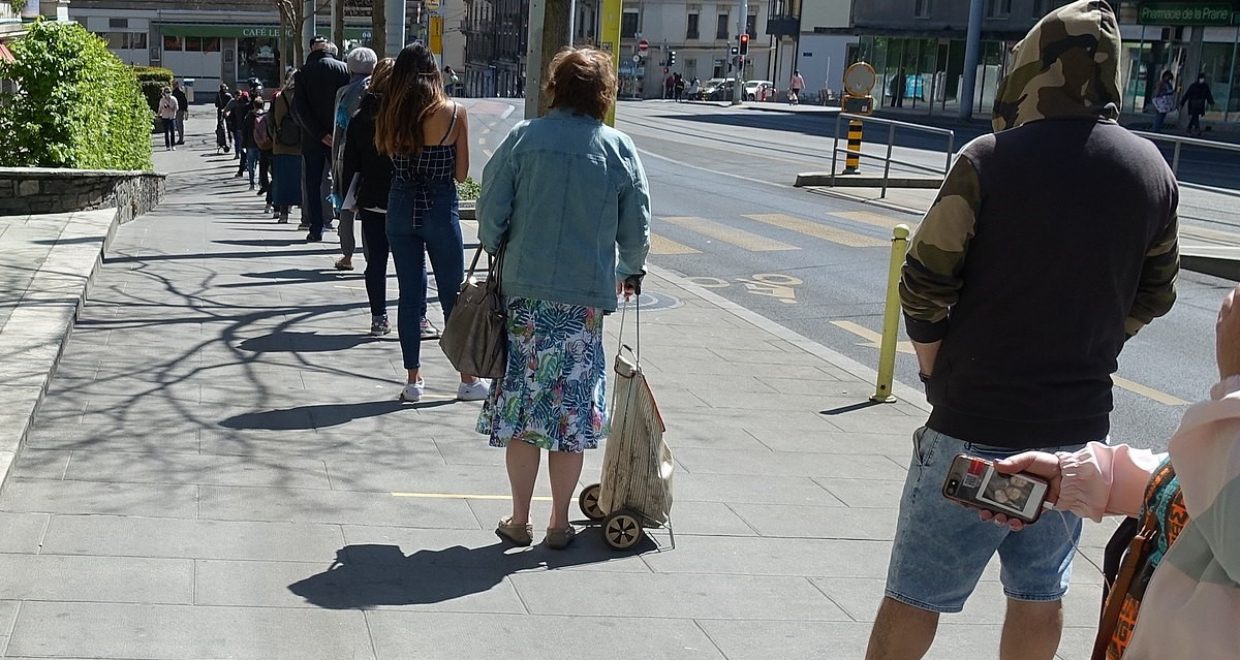Is physical distancing worth it, given its tremendous costs to the economy?
The novel coronavirus, SARS-CoV-2, was declared a pandemic by the WHO in March 2020. Around this time, many states and local governments in the United States declared states of emergencies and adopted policies aimed at reducing the frequency of physical contacts between people—social or physical distancing measures—in an attempt to stop the spread of the virus. These measures included stay-at-home orders, barred public gatherings, restricted travel, cancelled sporting events, and closures of schools, restaurants, bars, and gyms. While the policies would undoubtedly save lives by “flattening the curve” of infections, it was also clear that they would come at very high costs to local, state, and national economies. In particular, it was evident that the labor-intensive service industry, with small margins, would be hit hard, causing dramatic increases in unemployment and bankruptcy of many businesses. In addition to causing major strains on many households’ finances, this would further exacerbate the health crisis, due to loss of health insurance, housing, and other negative health effects from unemployment, giving rise to much personal hardship.
However, a serious public discussion about the economic impacts of social distancing measures was slow to emerge in the early days of the pandemic. While the focus was naturally on saving lives, rational policy-making requires an evaluation of both benefits and costs. It seemed essential to us to also consider the costs of social distancing policies in the same manner as we do for other policies. For instance, when setting speed limits for roads and highways, public agencies consider both the risks to human life and the benefits of people getting where they need to go quickly. Even in our personal lives, minimizing mortality risks is not our sole objective. If so, we would almost never travel by car because other travel modes are often safer. We can extend this familiar example to many other risky activities—such as unhealthy eating, biking, skiing, mountain climbing, and so on—for which we balance benefits (enjoyment) and risks. In fact, economists can put numbers on this balancing act. For example, economic studies based on the trade-off between work-place risks and wages indicate that, on average, American adults are willing to trade about $1,000 for a 0.0001 (1 in 10,000) reduction in their risk of dying in the coming year. This willingness-to-pay for a small change in mortality risks is conventionally scaled up to a “value per statistical life,” or VSL – the value of saving a life in benefit cost analyses of policies that entail mortality risks. Central estimates of the VSL in the U.S. are around $10 million which is close to the value that most U.S. government agencies use in benefit-cost analyses of federal regulations.
While it was impossible to know the full extent of the health benefits and economic costs of social distancing measures in the beginning of the pandemic, it also was impossible to delay policy decisions on whether and how to influence those outcomes. We therefore set out to conduct a rapid benefit-cost analysis of social distancing, using the best estimates of the key epidemiological parameters and economic impacts available at the time, and with due attention to the uncertainty in those estimates. Our central results suggested that the net benefits from social distancing policies in the U.S. amounted to $5.2 trillion—hence, despite the large economic costs, suppressing the virus with social distancing policies was warranted. So how did we come up with this number?
We began by using a standard epidemiological model of an infectious disease outbreak to estimate the number of potential deaths from infection under two scenarios: (1) if the virus were left to spread unchecked, and (2) if social distancing measures were maintained until an effective vaccine could be widely deployed. Our model predictions under scenario (1) closely matched the early predictions by the Imperial College COVID-19 response team. We then multiplied the predicted number of lives saved by the VSL to compute the economic benefits of social distancing. To estimate costs of social distancing, we relied on GDP projections generated by other researchers. Specifically, we calculated the present value of lost economic output by comparing a GDP forecast that entailed virus spread but no social distancing policies to Goldman Sachs’ GDP forecast from March 31, 2020 that accounted for both virus spread and social distancing.
We conducted extensive sensitivity analyses to examine the considerable uncertainties associated with many of the key ingredients in our benefit-cost analysis. Further, we highlighted several important outcomes that were excluded from our study, such as the health impacts on people who recovered from COVID-19, the emotional and mental health effects from extended social isolation, the effects on children’s learning and well-being from school closures, and more. The ultimate prevalence and severity of these outcomes are still largely unknown, and, as we are writing this in December 2020, a more comprehensive picture of the net social benefits from social distancing to address COVID-19 is still some ways away. But we believe that rapid assessments—like our early benefit-cost analysis of social distancing—can help to accelerate the larger social project of designing an effective policy response, not only for the current pandemic, but also for future large-scale public health challenges.
You can read Linda Thunström and Stephen C. Newbold’s article ‘The Benefits and Costs of Using Social Distancing to Flatten the Curve for COVID-19‘ in the Journal of Benefit-Cost Analysis.



